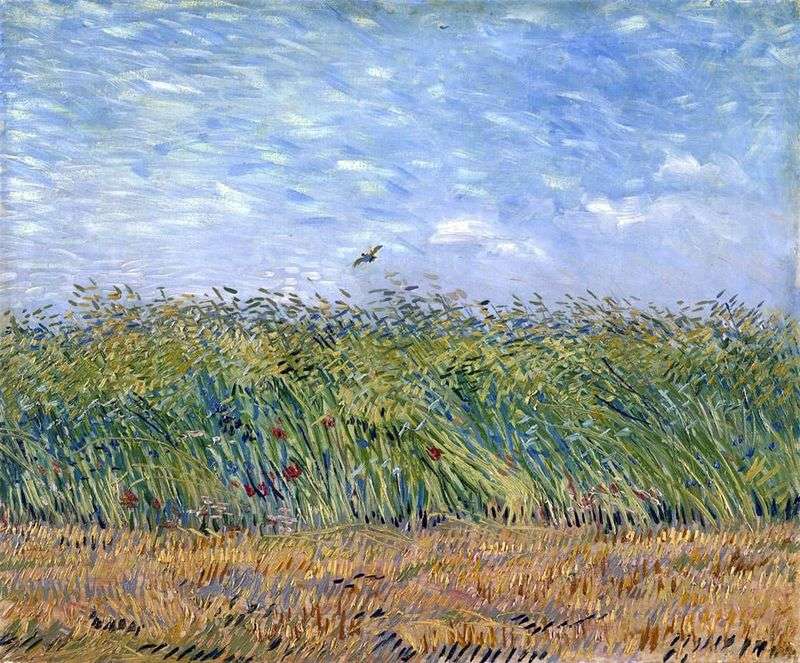
The picture “Wheat field with a lark” Vah Gog wrote in 1887.
The composition of the landscape is simple and uncomplicated, at the same time, its color structure and manner of writing are very unusual. Cold-blue colors of the sky closer to the horizon acquire a lilac tepid hue. Small quick strokes of white paint depict cirrus clouds. Against this background, the green-ocher colors of the wheat field are distinguished by a dark spot. The foreground is written in warm shades of yellow and red ocher.
The picture looks very solid in its color scheme, and the viewer does not immediately see that it all consists of individual small multi-colored strokes. This technique is close in its idea pointillism. Without mixing shades on the palette, the artist puts brush strokes of clean paint next to each other to create the illusion of mixing on canvas.
The author chose a low horizon line, taking most of the picture to the image of the sky. Its thick, cold colors are emphasized by the almost black shadows of the earth, which gives the landscape a tinge of anxiety. Wheat tends under sharp gusts of wind, and the only living character of the picture – a dark lark – flies low above the ground, as it happens before the rain.
Van Gogh was not a master of “landscape mood”, but all his work is an expression of acute subjective experiences. In this picture, he managed to convey an elusive way of feeling through the state of nature.
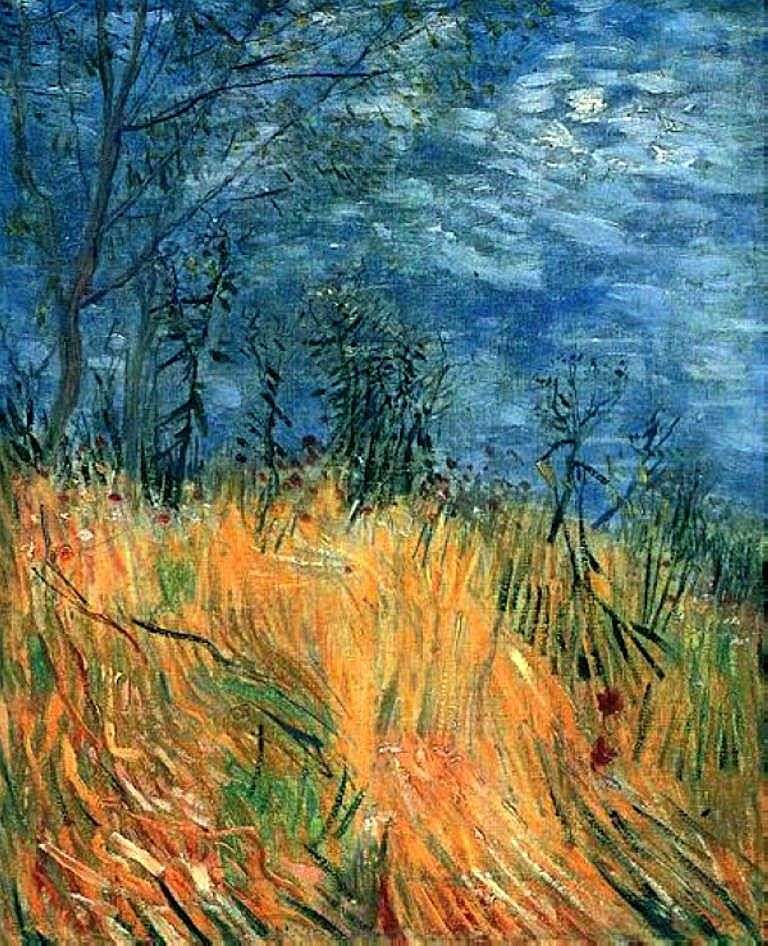 The edge of a wheat field with poppies by Vincent Van Gogh
The edge of a wheat field with poppies by Vincent Van Gogh Farmhouse on a wheat field by Vincent Van Gogh
Farmhouse on a wheat field by Vincent Van Gogh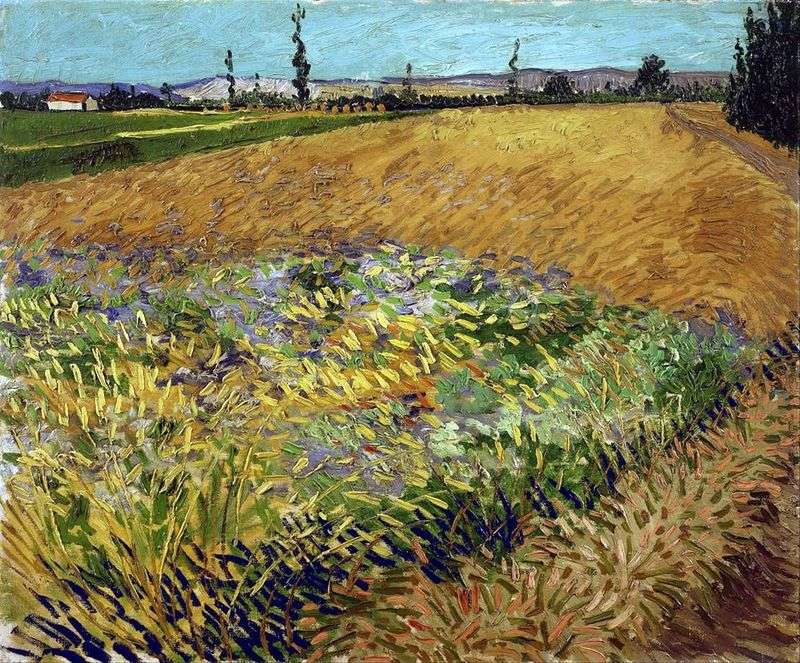 Wheat field and the foothills of the Old Alps in the background by Vincent Van Gogh
Wheat field and the foothills of the Old Alps in the background by Vincent Van Gogh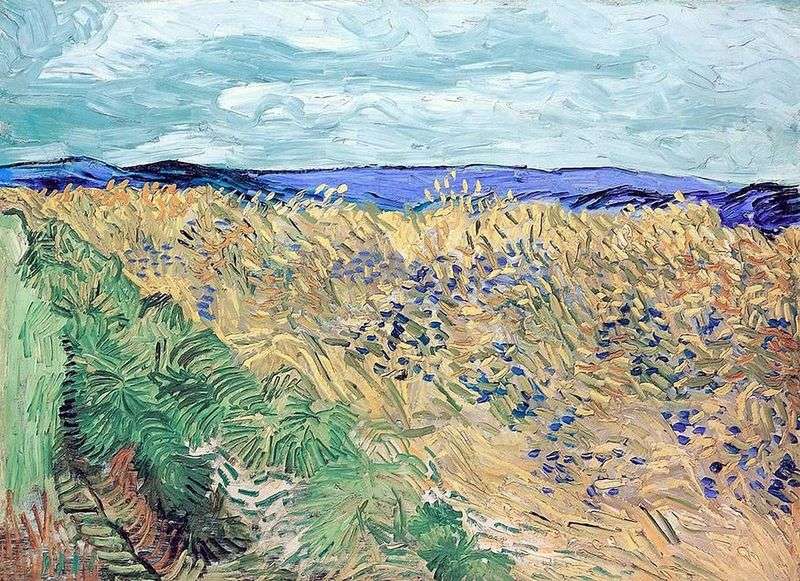 Wheat Field with Cornflowers by Vincent Van Gogh
Wheat Field with Cornflowers by Vincent Van Gogh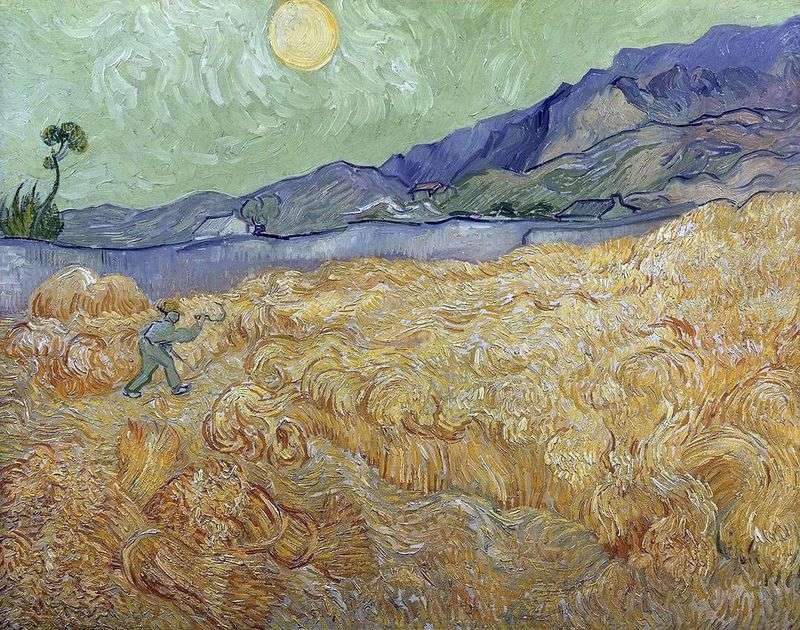 The wheat field at dawn and the reaper II by Vincent Van Gogh
The wheat field at dawn and the reaper II by Vincent Van Gogh Wheat Field by Vincent Van Gogh
Wheat Field by Vincent Van Gogh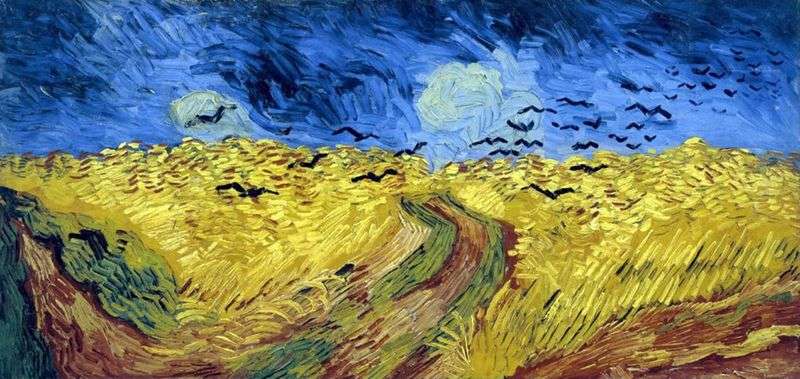 Wheat Field with Ravens by Vincent Van Gogh
Wheat Field with Ravens by Vincent Van Gogh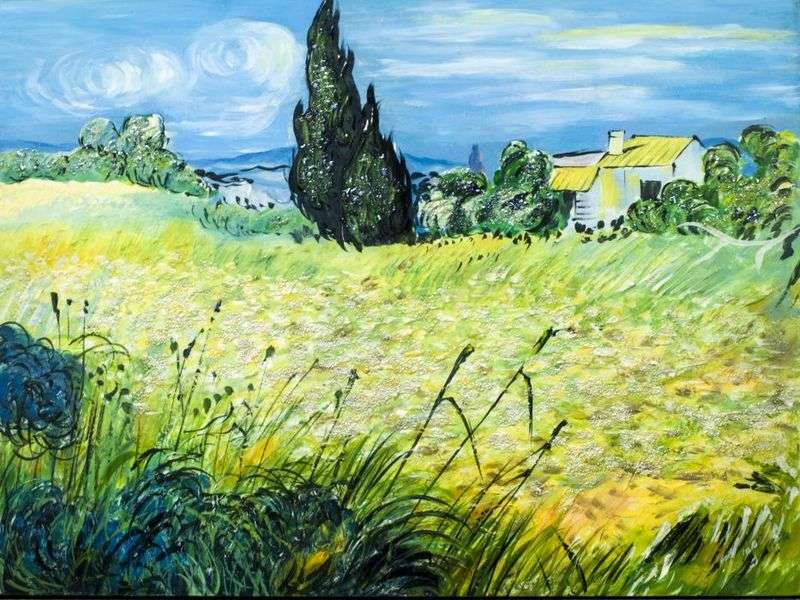 Green wheat field with cypress by Vincent Van Gogh
Green wheat field with cypress by Vincent Van Gogh